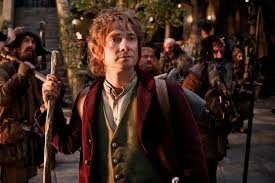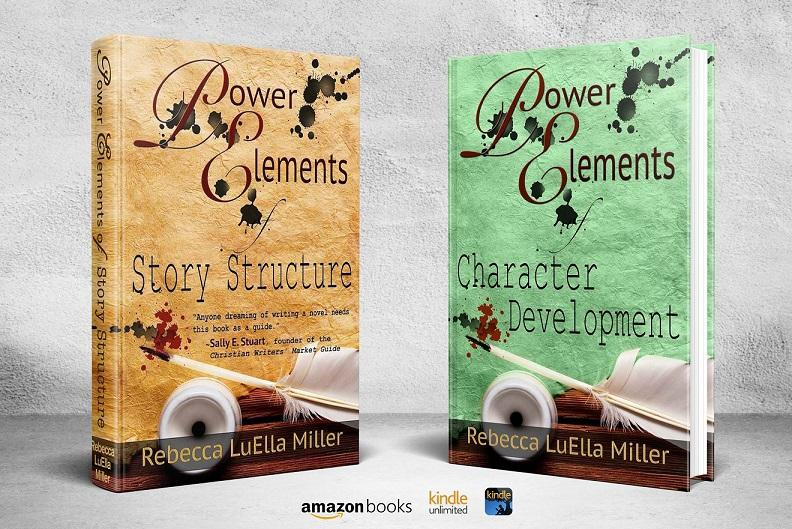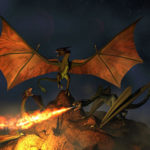People Groups
 Inventive people groups are a staple of speculative fiction. J. R. R. Tolkien’s hobbits might be the best group of fantasy people ever created. They are cute and cuddly, with their short stature and tough, leathery feet covered in hair—though they’d be insulted if Big People treated them like dolls. They’re also suspicious of the outside world and real homebodies. They love to eat and to celebrate and they love the Shire.
Inventive people groups are a staple of speculative fiction. J. R. R. Tolkien’s hobbits might be the best group of fantasy people ever created. They are cute and cuddly, with their short stature and tough, leathery feet covered in hair—though they’d be insulted if Big People treated them like dolls. They’re also suspicious of the outside world and real homebodies. They love to eat and to celebrate and they love the Shire.
In addition, they have some unique abilities—they can be extremely quiet when walking about (which made Bilbo the perfect choice to be Gandalf’s burglar). They also have excellent hearing and sharp eyesight. Beyond these physical attributes, hobbits are courageous and steadfast, intent on doing their work well and seeing it to completion.
I suppose it is because Bilbo and then Frodo were such admirable characters that all of Hobbation has become well-loved. But there are any number of other people groups who have won over readers.
In Donita K. Paul’s DragonKeeper Chronicles, there are a number of races with intriguing qualities. Reminiscent of hobbits are the doneel:
One of the seven high races. These people are furry with bulging eyes, thin black lips, and ears at the top and front of their skulls. They are small in stature, rarely over three feet tall. Generally are musical and given to wearing flamboyant clothing. (Glossary, DragonSpell, Donita Paul)
As I recall, they also loved to cook and had a definite sense of propriety. The chief donnel in the Chronicles is Dar. Here’s how the main character views him when she first meets him:
The whistling first sounded like a double-crested mountain finch, but then a few too many high notes warbled at the end of the call. Kale’s eyes sprang open, and she sat up. A doneel sat on a log by the stream. From his finger, a string dangled over the edge of a rock into the water. His clothes were tattered but bright in hue between the smudges of dirt and blood [which he’d acquired in a recent battle]. His whistle changed to the song of a speckled thrush.
Kale compared the look of this real=life doneel to the painted figure in the mural at the River Away Tavern. This whistling doneel sat, but she was sure if he stood, his little frame would not reach four feet. His tan and white furry head sat on a well=proportioned body. His large eyes hid under shaggy eyebrows that drooped down his temples and mingled with a long mustache. His broad nose stuck out like the muzzle of a dog, and his black lips met with hardly a chin at all underneath. Dressed in rich fabric of glorious colors, he was far more interesting than the blurry image on the dark tavern wall. (DragonSpellpp, pp 20-21)
Ms. Paul’s stories are filled with different people groups, generally divided into the seven high races and the seven low races, though other groups pop up throughout.
Interestingly she divides dragons into groups as well—major dragons used for transportation, minor dragons the size of kittens and gifted with peculiar individual abilities such as healing, and meech dragons who are the most intelligent of the species and capable of human speech.
In The Voyage Of The Dawn Treader C. S. Lewis invented a number of people groups as well, the best being the Dufflepuds. The passage of Lucy’s discovery of who they really are is filled with Lewis’s humor. Here’s a somewhat lengthy excerpt—I didn’t want to cut out the humorous parts at the beginning:
“You see, [said the Magician] it’s only they who think they were so nice to look at before. They say they’ve been uglified, but that isn’t what I called it. Many people might say the change was for the better.”
“Are they awfully conceited?”
“They are. Or at least the Chief Duffer is, and he’s taught all the rest to be. They always believe every word he says.”
“We’d noticed that,” said Lucy.
“Yes—we’d get on better without him, in a way. Of course I could turn him into something else, or even put a spell on him which would make them not believe a word he said. But I don’t like to do that. It’s better for them to admire him than to admire nobody.”
“Don’t they admire you?” asked Lucy.
“Oh, not me,” said the Magician. “They wouldn’t admire me.”
“What was it you uglified them for—I mean, what they call uglified?”
“Well, they wouldn’t do what they were told. Their work is to mind the garden and raise food—not for me as they imagine, but for themselves. They wouldn’t do it at all if I didn’t make them. And of course for a garden you want water. There is a beautiful spring about half a mile away up the hill. And from that spring there flows a stream which comes right past the garden. All I asked them to do was to take their water from the stream instead of trudging up to the spring with their buckets two or three times a day and tiring themselves out besides spilling half of it on the way back. But they wouldn’t see it. In the end they refused point blank.”
“Are they as stupid as all that?” asked Lucy.
The Magician sighed. “You wouldn’t believe the troubles I’ve had with them. A few months ago they were all for washing up the plates and knives before dinner: they said it saved time afterwards. I’ve caught them planting boiled potatoes to save cooking them when they were dug up. One day the cat got into the dairy and twenty of them were at work moving all the mile out; no one thought of moving the cat. But I see you’ve finished. Let’s go and look at the Duffers now they can be looked at.”
. . .
“I don’t see anybody,” said Lucy. “And what are those mushroom things?”
The things she pointed at were dotted all over the level grass. They were certainly very like mushrooms, but far too big—the stalks about three feet high and the umbrellas about the same length from edge to edge. When she looked carefully she noticed too that the stalks joined the umbrellas not in the middle but at one side which gave an unbalanced look to them. And there was something—a sort of little bundle—lying on the grass at the foot of each stalk. In fact the longer she gazed at them the less like mushrooms they appeared. The umbrella part was not really round as she had thought at first. It was longer than it was broad, and it widened at one end. There were a great many of them, fifty or more.
The clock struck three.
Instantly a most extraordinary thing happened. Each of the “mushrooms” suddenly turned upside down. The little bundles which had lain at the bottom of the stalks were heads and bodies. The stalks themselves were legs. But not two legs to each body. Each body had a single thick leg right under it (not to one side like the leg of a one-legged man) and at the end of it, a single enormous foot—a broad-toed foot with the toes curling up a little so that it looked rather like a small canoe. She saw in a moment why they had looked like mushrooms. They had been lying flat on their backs each with its single leg straight up in the air and its enormous foot spread out above it.
 Before the doneel, Dufflepuds, and hobbits were the people created from the imagination of Jonathan Swift in Gulliver’s Travels. Perhaps most famous were the Lilliputians, a race of people no bigger than six inches tall.
Before the doneel, Dufflepuds, and hobbits were the people created from the imagination of Jonathan Swift in Gulliver’s Travels. Perhaps most famous were the Lilliputians, a race of people no bigger than six inches tall.
Upon leaving Lilliput, Gulliver encounters a group of people on Brobdingnag who are giants. Next his ship is attacked by pirates and he’s marooned on a rocky island only to be rescued by the flying island of Laputa, “a kingdom devoted to the arts of music and mathematics but unable to use them for practical ends” (Wikipedia).
His travels take him to other strange lands such as Luggnagg where he encounters the struldbrugs, immortals who do not enjoy the fountain of youth but continue to age and suffer infirmity as a result. Gulliver’s final voyage results in mutiny. He’s set in a boat and encounters a land where he finds “a race of hideous, deformed and savage humanoid creatures to which he conceives a violent antipathy. Shortly afterwards he meets a race of horses who call themselves Houyhnhnms (which in their language means “the perfection of nature”); they are the rulers, while the deformed creatures called Yahoos are human beings in their base form” (Ibid.)
I could go on. The creation of people groups seems to be a common speculative trope, sometimes for allegorical purposes and sometimes for the sheer beauty and ingenuity of creation.
What people group have you discovered in your reading? Who’s your favorite and why? If they are a group of your own creation, tell us in a hundred words or less what makes them unique.












































People groups. Tough question.
I think my favorite group as a whole are espers. People with psychic abilities. Timothy Zahn had a great concept in A Coming of Age where on another planet, children develop psychic abilities only to lose them at puberty. So the entire society is about guiding and restraining those kids in positive ways till they Transition out of being a danger.
I also like the concept in the old BBC show The Tomorrow People. The next generation of children are seeing espers pop up in their ranks, and they have to solve problems while avoiding people who want to use them. Very cheesy, but kind of cool, too.
I think the concept is cool because it in a weird way is related to how we all connect on the internet. Like now you are reading my thoughts on this, as I am yours, regardless of distance. We are all connected, but espers make the connection even closer. I made one of my own in my book Triune, with the character Jamie. He’s more of a physical esper, in that he can do things like manipulate the nervous system and spoof nerve impulses to send his messages and read thoughts instead of it being a psychic thing.
Have you seen the TV program The Listener, David? That’s based on a guy who has psychic ability—actually to hear another person’s thoughts. It also reminds me of Jill Williamson’s Blood of Kings trilogy, with a character gifted to hear other’s thoughts—a gift only found in the royal line.
It’s interesting to see what writers have done with this concept. Donita Paul gave some of her characters this ability in The DragonKeeper Chronicles. I don’t remember if it was an entire race or just some individuals. I do know that a dragon and hjs rider had a psychic connection. It’s a pretty powerful tool!
Stephen Lawhead in his Bright Empires series, which involves a type of time travel (but not really), had a group of prehistoric people who all communicated telepathically, in images rather than in language. It was quite interesting. He created a really beautiful, pacific life for those people. I was sorry when the main character ended up shifting to another place and time.
Thanks for adding you thoughts to the discussion, David.
Becky
Comments on the various subjects:
Bright Empires – the prehistoric part was the best part of the whole series. It was overall disappointing to me, because it was hyped and promoted as “high fantasy” before it began… then it became traveling to “alternate” worlds… which ended up not really being alternate so much as different times. So: time travel. Meh.
DragonKeeper Chronicles – I loved that Donita Paul spent so much effort to create so many different races. It was an admirable effort. Unfortunately, to me, it never fully paid off. Most of the races seemed very interchangeable, and a particular character’s race never seemed to be all that important for the story. I’ll admit I may not be remembering accurately – part of the problem here was that each time a new book came out, I had to re-learn the races again, because they were so unfamiliar.
By contrast, the races of Middle-Earth are so familiar to me that it’s hard to imagine “fantasy” without them.
Also of special note – the hrossa and other races of C.S. Lewis’ space trilogy.
It’s really hard to think of another one that has made an impression on me.
Tim, thanks for adding your thoughts here. I can’t say I disagree to any of them. I liked the prehistoric part of The Bright Empires the best, also. I thought the main character finally started acting in a way that made me care for him.
I really liked Donita Paul’s inventiveness, but the seven high and low races, while a good organizing principle for that world, didn’t really hold true and some of the more interesting people groups weren’t counted in the original 14. I don’t think meech dragons were, and their race actually did affect their part of the story quite a bit. I think kimens were also a later add, and their part of the story was absolutely tied to their race.
Like you, I especially like Lewis’s space trilogy people. I was planning to add them to this article, but it was already getting too long. I was hoping someone else would include them, so I’m especially happy you mentioned them. Really unforgettable.
Becky